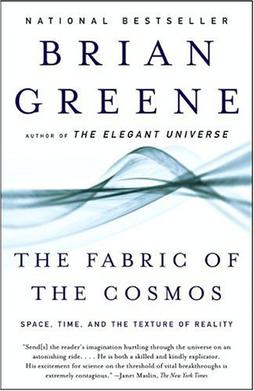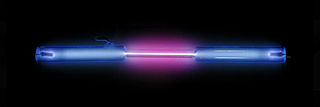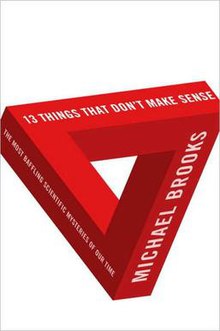
In modern physics, antimatter is defined as matter composed of the antiparticles of the corresponding particles in "ordinary" matter, and can be thought of as matter with reversed charge, parity, and time, known as CPT reversal. Antimatter occurs in natural processes like cosmic ray collisions and some types of radioactive decay, but only a tiny fraction of these have successfully been bound together in experiments to form antiatoms. Minuscule numbers of antiparticles can be generated at particle accelerators; however, total artificial production has been only a few nanograms. No macroscopic amount of antimatter has ever been assembled due to the extreme cost and difficulty of production and handling. Nonetheless, antimatter is an essential component of widely available applications related to beta decay, such as positron emission tomography, radiation therapy, and industrial imaging.

Astrobiology is a scientific field within the life and environmental sciences that studies the origins, early evolution, distribution, and future of life in the universe by investigating its deterministic conditions and contingent events. As a discipline, astrobiology is founded on the premise that life may exist beyond Earth.

The Big Bang is a physical theory that describes how the universe expanded from a primordial state of high density and temperature. It was first proposed as a physical theory in 1931 by Roman Catholic priest and physicist Georges Lemaître when he suggested the universe emerged from a "primeval atom". Various cosmological models of the Big Bang explain the evolution of the observable universe from the earliest known periods through its subsequent large-scale form. These models offer a comprehensive explanation for a broad range of observed phenomena, including the abundance of light elements, the cosmic microwave background (CMB) radiation, and large-scale structure. The overall uniformity of the universe, known as the flatness problem, is explained through cosmic inflation: a sudden and very rapid expansion of space during the earliest moments. However, physics currently lacks a widely accepted theory of quantum gravity that can successfully model the earliest conditions of the Big Bang.

Physical cosmology is a branch of cosmology concerned with the study of cosmological models. A cosmological model, or simply cosmology, provides a description of the largest-scale structures and dynamics of the universe and allows study of fundamental questions about its origin, structure, evolution, and ultimate fate. Cosmology as a science originated with the Copernican principle, which implies that celestial bodies obey identical physical laws to those on Earth, and Newtonian mechanics, which first allowed those physical laws to be understood.
In astronomy, dark matter is a hypothetical form of matter that appears not to interact with light or the electromagnetic field. Dark matter is implied by gravitational effects which cannot be explained by general relativity unless more matter is present than can be seen. Such effects occur in the context of formation and evolution of galaxies, gravitational lensing, the observable universe's current structure, mass position in galactic collisions, the motion of galaxies within galaxy clusters, and cosmic microwave background anisotropies.
Extraterrestrial life, alien life, or colloquially simply aliens, is life which does not originate from Earth. No extraterrestrial life has yet been conclusively detected. Such life might range from simple forms such as prokaryotes to intelligent beings, possibly bringing forth civilizations that might be far more advanced than the human species. The Drake equation speculates about the existence of sapient life elsewhere in the universe. The science of extraterrestrial life is known as astrobiology.

Life is a quality that distinguishes matter that has biological processes, such as signaling and self-sustaining processes, from matter that does not. It is defined descriptively by the capacity for homeostasis, organisation, metabolism, growth, adaptation, response to stimuli, and reproduction. All life over time eventually reaches a state of death and none is immortal. Many philosophical definitions of living systems have been proposed, such as self-organizing systems. Viruses in particular make definition difficult as they replicate only in host cells. Life exists all over the Earth in air, water, and soil, with many ecosystems forming the biosphere. Some of these are harsh environments occupied only by extremophiles.

Physics is the natural science of matter, involving the study of matter, its fundamental constituents, its motion and behavior through space and time, and the related entities of energy and force. Physics is one of the most fundamental scientific disciplines, with its main goal being to understand how the universe behaves. A scientist who specializes in the field of physics is called a physicist.

Particle physics or high-energy physics is the study of fundamental particles and forces that constitute matter and radiation. The field also studies combinations of elementary particles up to the scale of protons and neutrons, while the study of combination of protons and neutrons is called nuclear physics.
Pathological science is an area of research where "people are tricked into false results ... by subjective effects, wishful thinking or threshold interactions." The term was first used by Irving Langmuir, Nobel Prize-winning chemist, during a 1953 colloquium at the Knolls Research Laboratory. Langmuir said a pathological science is an area of research that simply will not "go away"—long after it was given up on as "false" by the majority of scientists in the field. He called pathological science "the science of things that aren't so."
In physics, there are four observed fundamental interactions that form the basis of all known interactions in nature: gravitational, electromagnetic, strong nuclear, and weak nuclear forces. Some speculative theories have proposed a fifth force to explain various anomalous observations that do not fit existing theories. The characteristics of this fifth force depend on the hypothesis being advanced. Many postulate a force roughly the strength of gravity with a range of anywhere from less than a millimeter to cosmological scales. Another proposal is a new weak force mediated by W′ and Z′ bosons.

Erik Peter Verlinde is a Dutch theoretical physicist and string theorist. He is the identical twin brother of physicist Herman Verlinde. The Verlinde formula, which is important in conformal field theory and topological field theory, is named after him. His research deals with string theory, gravity, black holes and cosmology. Currently, he works at the Institute for Theoretical Physics at the University of Amsterdam.

The Fabric of the Cosmos: Space, Time, and the Texture of Reality (2004) is the second book on theoretical physics, cosmology, and string theory written by Brian Greene, professor and co-director of Columbia's Institute for Strings, Cosmology, and Astroparticle Physics (ISCAP).

Physics World is the membership magazine of the Institute of Physics, one of the largest physical societies in the world. It is an international monthly magazine covering all areas of physics, pure and applied, and is aimed at physicists in research, industry, physics outreach, and education worldwide.

Proposed Studies on the Implications of Peaceful Space Activities for Human Affairs, often referred to as "the Brookings Report", was a 1960 report commissioned by NASA and created by the Brookings Institution in collaboration with NASA's Committee on Long-Range Studies. It was submitted to the House Committee on Science and Astronautics of the United States House of Representatives in the 87th United States Congress on April 18, 1961.

The NASA Institute for Advanced Concepts (NIAC) is a NASA program for development of far reaching, long term advanced concepts by "creating breakthroughs, radically better or entirely new aerospace concepts". The program operated under the name NASA Institute for Advanced Concepts from 1998 until 2007, and was reestablished in 2011 under the name NASA Innovative Advanced Concepts and continues to the present. The NIAC program funds work on revolutionary aeronautics and space concepts that can dramatically impact how NASA develops and conducts its missions.

The Enemies of Reason is a two-part television documentary, written and presented by evolutionary biologist Richard Dawkins, in which he seeks to expose "those areas of belief that exist without scientific proof, yet manage to hold the nation under their spell", including mediumship, acupuncture and psychokinesis.

In classical physics and general chemistry, matter is any substance that has mass and takes up space by having volume. All everyday objects that can be touched are ultimately composed of atoms, which are made up of interacting subatomic particles, and in everyday as well as scientific usage, matter generally includes atoms and anything made up of them, and any particles that act as if they have both rest mass and volume. However it does not include massless particles such as photons, or other energy phenomena or waves such as light or heat. Matter exists in various states. These include classical everyday phases such as solid, liquid, and gas – for example water exists as ice, liquid water, and gaseous steam – but other states are possible, including plasma, Bose–Einstein condensates, fermionic condensates, and quark–gluon plasma.
Vyacheslav Gennadievich Turyshev is a Russian physicist now working in the US at the NASA Jet Propulsion Laboratory (JPL). He is known for his investigations of the Pioneer anomaly, affecting Pioneer 10 and Pioneer 11 spacecraft, and for his attempt to recover early data of the Pioneer spacecraft to shed light on such a phenomenon.












